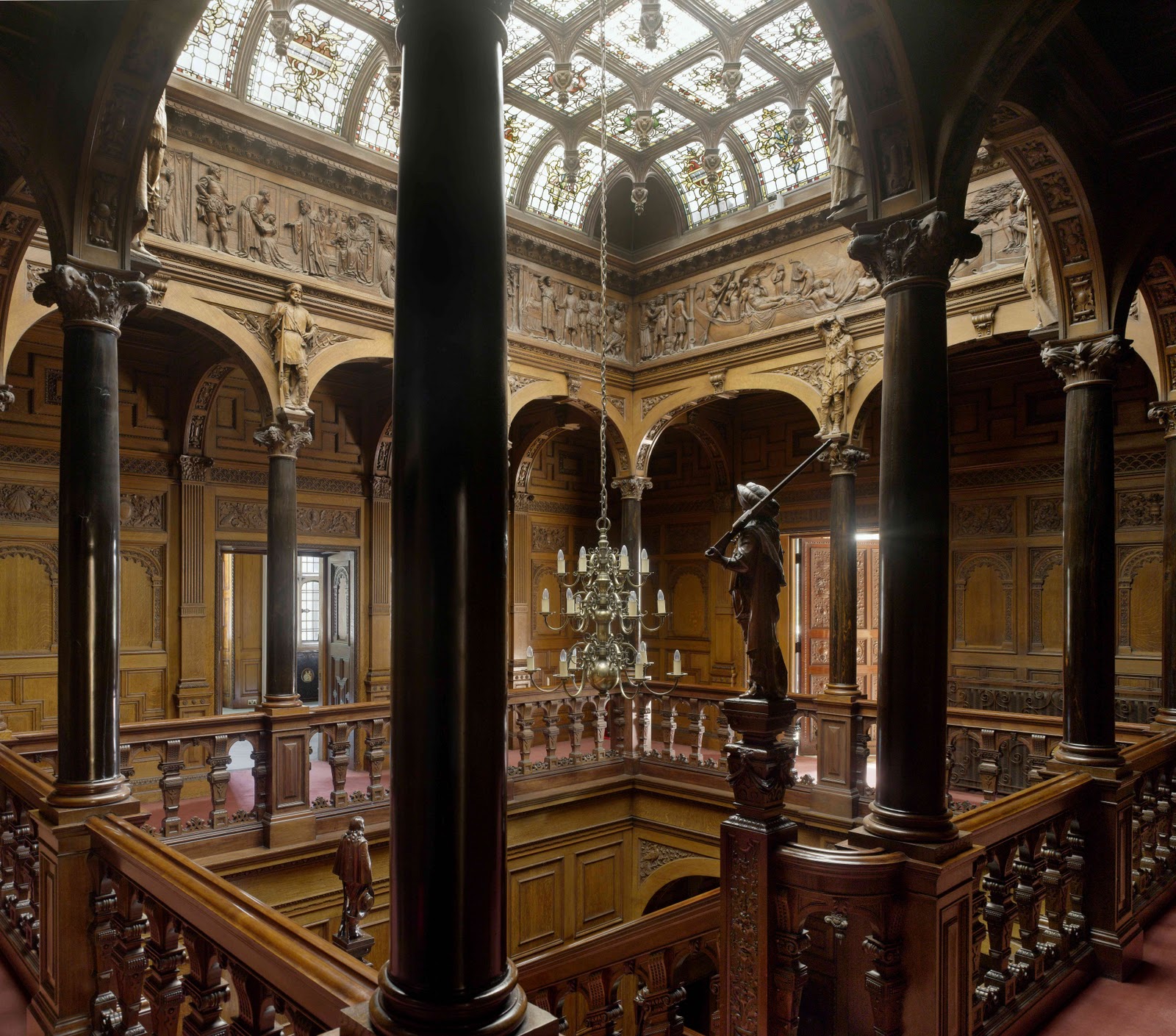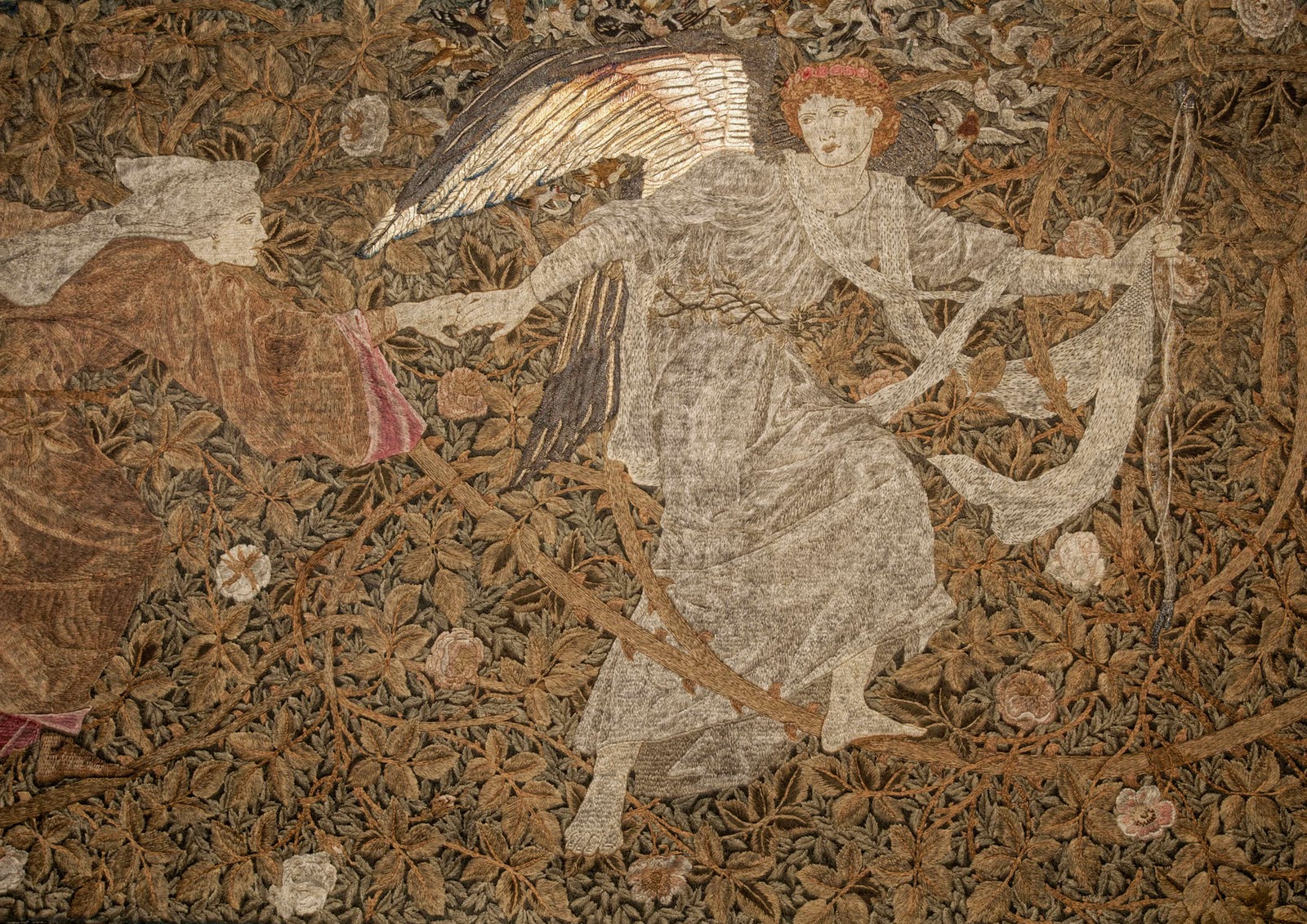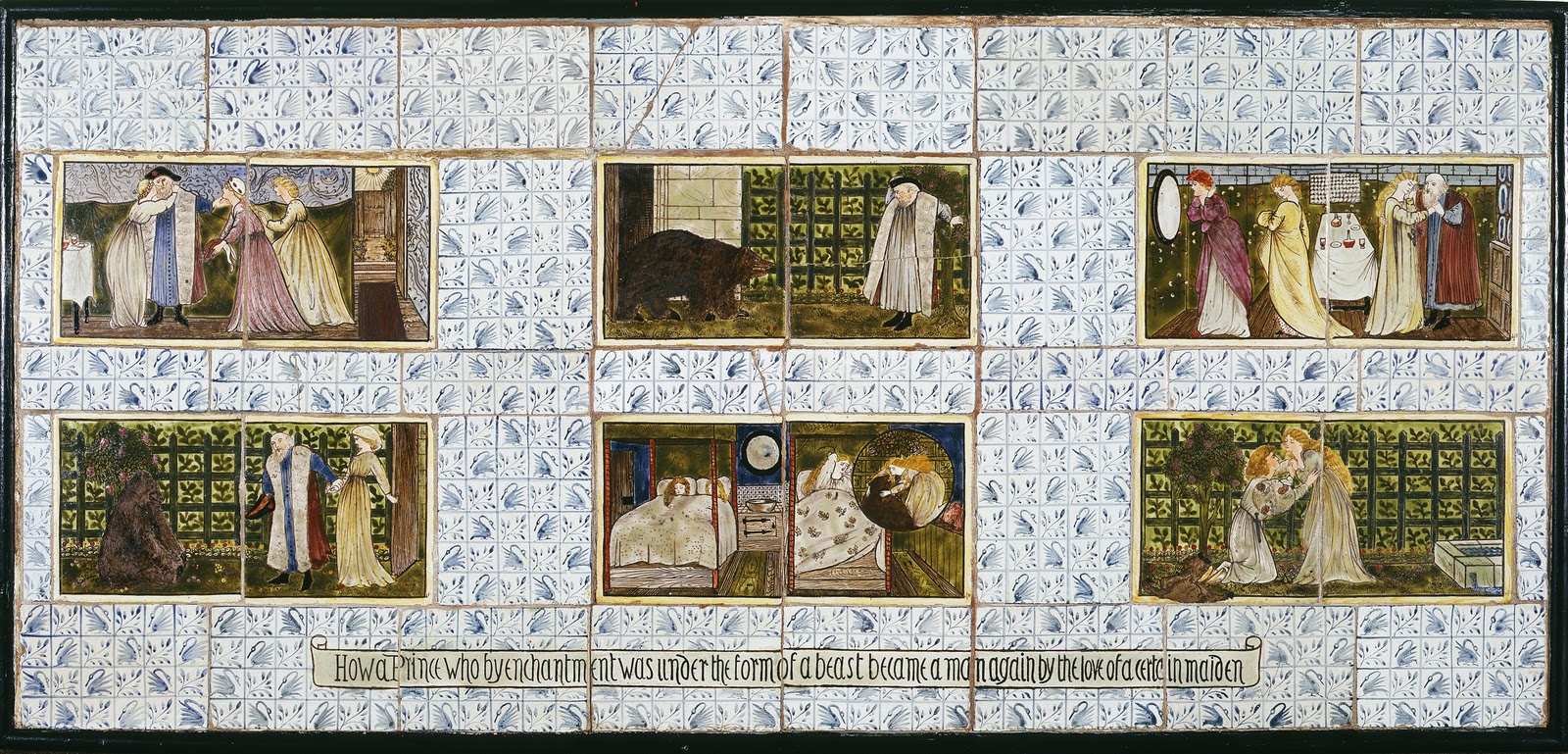27/10/11
William Morris: Story, Memory, Myth
Two Temple Place
27 October 2011 – 29 January 2012
Arriving at Two Temple Place, I was met at the gate by a smartly clad commissionaire. This certainly raised my expectations for what I would see on the other side of the grand wood panelled door, and I was not disappointed. The house was built, with no expense spared, in the early 1890s, as the estate office and family base in London for the first Viscount Astor, William Waldorf. The grand neo-Gothic mansion was designed by pre-eminent Victorian architect John Loughborough Pearson, and its interior was heavily influenced by Astor’s love of literature. He wanted specifically that the décor “personify literature in addition to being representative of art, craft and architecture,” and this is evident, for example, from the many characters beautifully carved and gilded by Nathaniel Hitch on the cedar wood panelling of the Great Hall, and the rilievo frieze of 82 Shakespearian characters in the gallery.

The mansion is now owned by the Bulldog Trust, who intend to use it as the first exhibition space in London dedicated to showcasing works from museums and collections from across the country. Launching with the exhibition William Morris: Story, Memory, Myth, this is the first time that the building has been fully opened to the public.

The exhibition, which includes many of the highlights from the William Morris Gallery in Walthamstow (closed until July 2012 for renovation), considers Morris’ work from the standpoint of his own love for literature and legend. Alongside some of his better-known wallpapers and furnishing fabrics, tapestries, and a charming pencil and ink study of Jane Morris (ca. 1861), are various manuscripts of Icelandic sagas, classical tales (from Cupid and Psyche to Chaucer), and Arthurian legends. It is said that their discovery of a copy of Thomas Malory’s book, Le Morte D’Arthur, in 1855, was a turning point in the careers of both Morris and Edward Burne-Jones, who were greatly inspired by the ideals of brotherhood and fellowship represented therein. Morris’ favourite story was that of Tristram and Isoude, and his contribution to a 13 panel stained glass window, created along with Burne-Jones and Dante Gabriel Rossetti for Harden Grange in Yorkshire, was the four panels depicting scenes from this tale, also now on show in the Lower Gallery.
Upstairs in the library is a feast for children – Brer Rabbit fabrics, tile panels depicting the fairy tales of Cinderella and Beauty and the Beast (said by Georgina Burne-Jones to provide her husband with a welcome outlet for his “abounding humour”), and a larger, collaborative series of tiles produced by Morris, Burne-Jones, Rossetti, Ford Madox Brown, and Philip Webb, The Labours of the Months (1863), on which the months of the year are represented both by astrological signs and traditional agricultural tasks. An extra nice touch is that the water carrier depicted for Aquarius is said to be based on a portrait of Morris himself.

As Lorna Lee, director of the William Morris Gallery, commented: “We are delighted that some of the highlights from our collection will be housed in Two Temple Place. This exhibition […] enables a deeper understanding of William Morris’ output by exhibiting his works together with others by him from collections across the country in such a magnificent and fitting location.” This couldn’t be more true. Either the exhibition or the house alone would be worth visiting in isolation from one another, but both together provide a unique and exquisite treat.
Images:
Gallery with ebony pillars, Two Temple Place © Will Pryce
Love Leading the Pilgrim through the Briars from The Romance of
the Rose embroidered frieze
Edward Burne-Jones and William Morris (1874-82)
Linen embroidered with silks, wools and gold thread
Embroidered by Margaret Bell and her daughter Florence
© William Morris Gallery, London
Beauty and the Beast tile panel with Swan border tiles
Edward Burne-Jones and William Morris (1862)
Hand-painted on tin-glazed earthenware Dutch blanks
Painted by Lucy Faulkner for Morris, Marshall, Faulkner & Co.
© William Morris Gallery, London